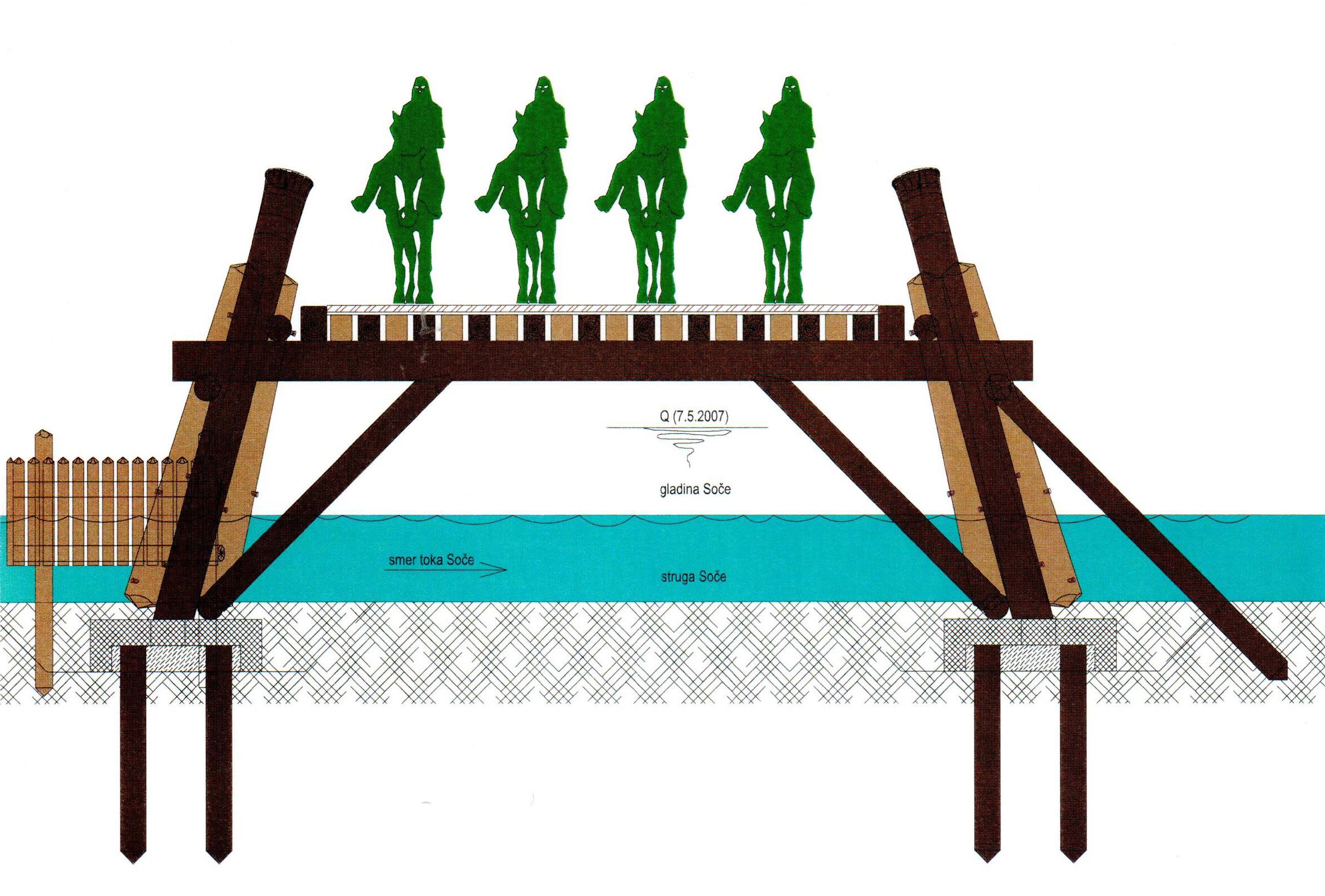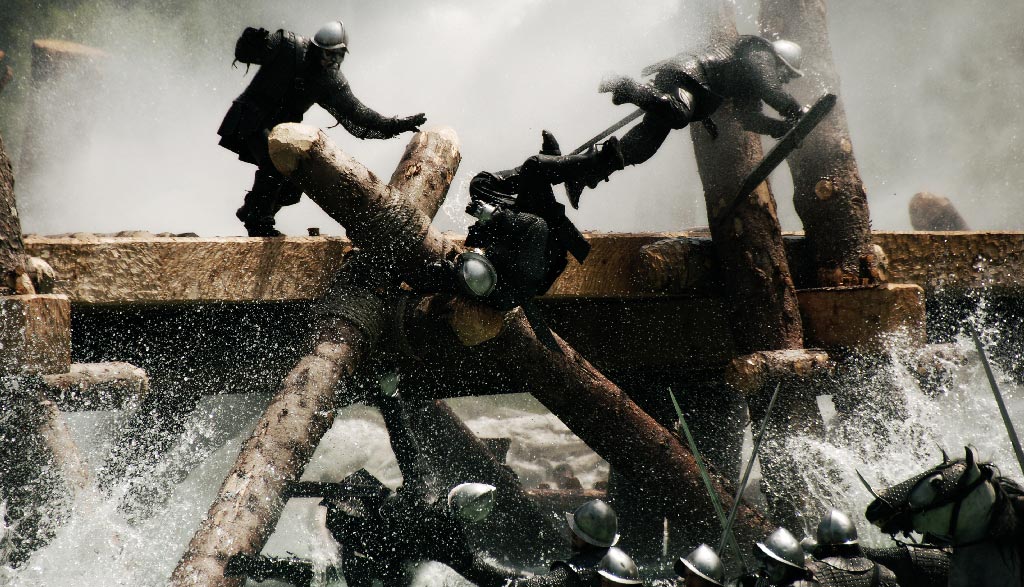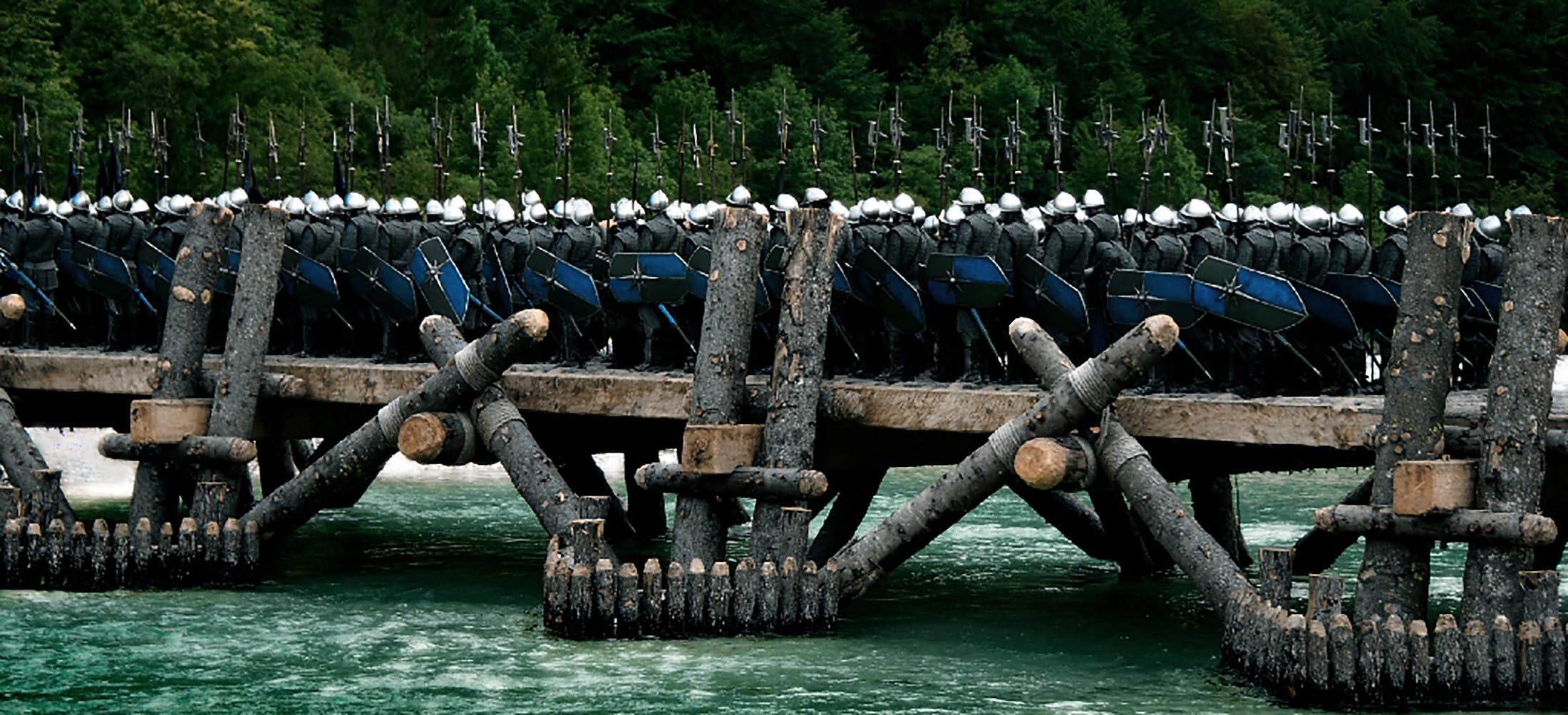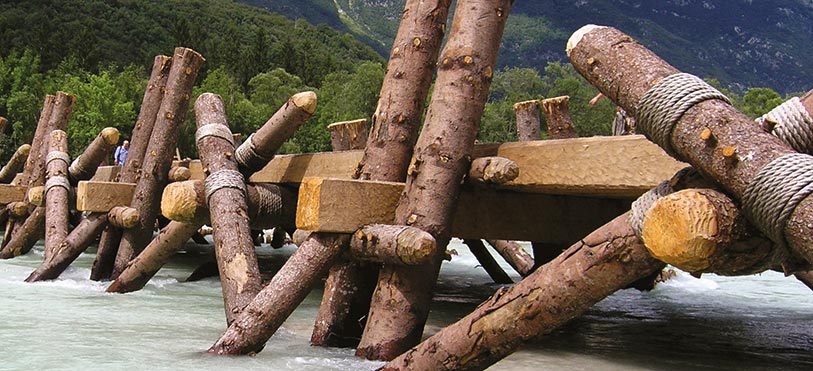bovec

Beruna Bridge
Gorazd HUMAR
HISTORY
THE BERUNA BRIDGE WAS SPECIFICALLY BUILT FOR A WALT DISNEY PICTURES MOVIE
In early summer 2007, near Bovec (Plezzo) along the Soča-Isonzo River, filming took place for the fantasy movie “Prince Caspian,” based on “The Chronicles of Narnia”. The project, led by the prestigious production companies Walt Disney Pictures and Walden Media, centred on a key scene featuring a wooden structure called the Beruna Bridge. Its design drew inspiration from Caesar’s ancient Roman bridge over the Rhine, built in 55 BC.Unlike Caesar’s bridge, the 60-metre-long Beruna Bridge was designed to be a visually striking structure with elaborate architectural elements. Far from being just a movie set, the bridge was engineered with precise static calculations and load requirements. It needed to withstand not only the weight of 50 mounted riders and 300 soldiers at once but also the rising waters of the Soča-Isonzo River. After just 10 days of filming battle scenes, the entire bridge was dismantled.


BRIDGE CONSTRUCTION AND STRUCTURAL ENGINEERING
The bridge was built entirely of wood, with its concrete foundations concealed in the river gravel. Massive spruce logs—50 cm in diameter, totalling 300 m³—formed the inclined wooden piers in the water. The wooden components were joined using sturdy threaded iron bars and nuts, which were then hidden with wooden dowels. A distinctive feature was the decorative braided rope connecting the joints, creating the illusion that the rope alone held the structure together. The walkways were carefully crafted to appear handmade, mimicking traditional construction methods. Expert carpenters worked each wooden element by hand to fulfil the client’s requirement that the bridge look as if it were built using ancient tools—primarily axes and manual pile drivers.The filmmakers made two specific requests: demolish two-thirds of the bridge within 36 hours and document the construction process using period-appropriate tools and pile drivers.
BRIDGE CONSTRUCTION AND STRUCTURAL ENGINEERING
The bridge was built entirely of wood, with its concrete foundations concealed in the river gravel. Massive spruce logs—50 cm in diameter, totalling 300 m³—formed the inclined wooden piers in the water. The wooden components were joined using sturdy threaded iron bars and nuts, which were then hidden with wooden dowels. A distinctive feature was the decorative braided rope connecting the joints, creating the illusion that the rope alone held the structure together. The walkways were carefully crafted to appear handmade, mimicking traditional construction methods. Expert carpenters worked each wooden element by hand to fulfil the client’s requirement that the bridge look as if it were built using ancient tools—primarily axes and manual pile drivers.The filmmakers made two specific requests: demolish two-thirds of the bridge within 36 hours and document the construction process using period-appropriate tools and pile drivers.

WHAT HAPPENED NEXT
The scenes shot in the Soča-Isonzo Valley near Bovec (Plezzo) take up about ten minutes of the entire film. During filming, approximately 1,100 film crew members, including renowned director Andrew Anderson, found accommodation at the filming location. The 2007 filming of “Prince Caspian” was considered that year’s largest cinematic undertaking.Two years later, Bovec hosted Slovenia’s film premiere. Prince Caspian. In one of its most spectacular scenes, a water god destroys the wooden bridge crowded with soldiers—a sequence brought to life through advanced digital technology. The film achieved international acclaim while showcasing the stunning beauty of the Soča-Isonzo Valley.
As the Beruna Bridge was constructed in the Triglav National Park nature reserve, crews were compelled to completely remove the structure and restore the site to its natural state after filming was over. Due to wood parasites, none of the wooden components could be preserved, leaving the Beruna Bridge to exist only in memory.





